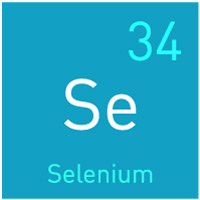 Efficient selenium treatment and understanding ecological risks associated with the contaminant requires detailed molecular information to make educated decisions. As with any element, the molecular form of selenium, or chemical species, dictates how the element will interact with the environment and respective organisms. To support the increasing demands of the marketplace, Brooks Applied Labs continues to expand the suite of selenium species our proprietary methods can quantitate. Two organic selenium species, dimethylselenoxide and methaneselenonic acid, have been added to our capabilities to allow our clients to better understand the bioaccumulation of selenium and risk to the relevant aquatic habitats.
Efficient selenium treatment and understanding ecological risks associated with the contaminant requires detailed molecular information to make educated decisions. As with any element, the molecular form of selenium, or chemical species, dictates how the element will interact with the environment and respective organisms. To support the increasing demands of the marketplace, Brooks Applied Labs continues to expand the suite of selenium species our proprietary methods can quantitate. Two organic selenium species, dimethylselenoxide and methaneselenonic acid, have been added to our capabilities to allow our clients to better understand the bioaccumulation of selenium and risk to the relevant aquatic habitats.
More than a dozen selenium species have been identified in both natural and anthropogenically-impacted waters, including volatile forms like dimethylselenide and reduced forms like selenocyanate. As analytical technology advances, more information regarding the complexity of selenium chemistry is available. This is especially important in situations where biological activity can produce complex organic selenium species, as found in natural environments as well as bioreactor treatment systems. Government agencies in North America and other parts of the world are increasing their understanding regarding the implications of the different molecular forms of selenium and have already implemented regulations accordingly.
BAL currently supports the identification and quantitation of the following selenium species:
- Selenite
- Selenate
- Selenocyanate
- Methylselenocysteine
- Selenomethionine
- Dimethylselenide
- Dimethyldiselenide
- Selenosulfate
- Methylseleninic acid
- Dimethylselenoxide
- Methaneselenonic acid
- Selenomethionine oxide
- Selenoproteins
- Elemental selenium
- Other more esoteric selenium species
When you work with Brooks Applied Labs, you not only benefit from our state-of-the-art instrumentation and robust methods, but also from our experienced staff who can provide guidance regarding how your data objectives align with today’s technology. Including speciation analyses alongside more traditional total elemental analyses can provide you with greater confidence in your data, particularly when the results of these two separate analyses agree. And in cases where the two analyses may differ, our staff will work with you to interpret the results and recommend alternative approaches to identify the source of the discrepancy. To learn more about how partnering with Brooks Applied Labs can help ensure the success of your project, please contact us today!
